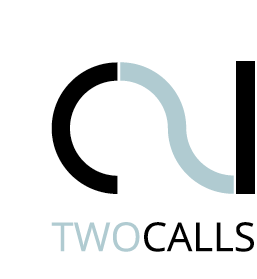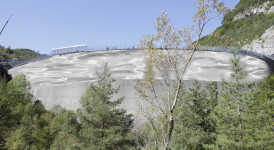



VW are two lines of the hand
.
V is the ”life” line, then the vitality, the great changes due to external factors that may affect the person’s life (in this case the Vajont disaster).
W is the “Head” line, then the mind, its ability to work, the desire for knowledge, communication and approach (creative/analytical), information.
VW are constituted by two ribbons of different colors for the discipline of LONGLINE, that is, for the exercise of balance/dynamic balancing.
V is stretched parallel to the top of the dam from point A to point B1, at the level of the water in the basin in 1963, and adherent to the wall of the dam itself; stretched so as to deprive it of its function temporarily, as the dam itself is deprived of its natural use because of the tragedy, but, especially, how the space of this valley and its inhabitants with it were deprived and spoiled of their meaning. This places are still almost in a state of “stand-by”.
W is stretched perpendicular to the top of the dam, but starting from the point B2 to the point C located on the opposite side of the basin and crosscut (the angle that will be created between the two lines at points between B1/B2 will be equal to the angle actually measured on the hand of a survivor of the tragedy). Once this line will be correctly placed, it will be walkable by those who will know and will put themselves in the mental condition to live again this space, denied by the tragedy.
W therefore marks a new path, a new mental approach to this space that doesn’t want be commemorative, rigidly anchored to the past, but alive and open to communication, a space able to see the body and mind, experience and intellect, “life” and “head”, able to test itself to find new ways to go through. The human presence, on the line at that fateful height, will re-draw the space: the body weight will lead the line to lower itself, symbolically returning under the breaking point. The man itself with its presence will eliminate any danger, because while seeing through the v and w lines, the second one will appear, thanks to the man weight force.
W is also not “deliberately” easy to approach, nor is life in these places; the strong mental will necessary to walk on w is the same expressed by the inhabitants of erto and casso, by the choice to keep on living in these places.
The idea comes from the observation of the lines present in the rocks of these mountains, and by the awareness that since ever living in the mountains means tracing new paths (or lines), either as a challenge to the peaks, either as a need to move and communicate, either as a cleverness (taking advantage of the routes to wood carriage).
–
VW sono due linee della mano.
V rappresenta la linea “della vita”, quindi la vitalità, i grandi cambiamenti dovuti a fattori esterni, che possono intervenire nella vita della persona (nel caso specifico il disastro del Vajont).
W rappresenta la linea “della testa”, quindi la mente, la sua capacità di elaborare, il desiderio di conoscenza, di comunicazione e di approccio (creativo/analitico) all’informazione.
VW sono costituite da due fettucce di diversi colori per la disciplina della LONGLINE, cioè per l’esercizio di equilibrio/bilanciamento dinamico.
V viene tesa parallelamente al coronamento della diga dal punto A al punto B1, all’altezza del bacino d’acqua presente nel 1963 ed aderente alla parete della diga stessa, tesa in modo tale da privarla momentaneamente della sua funzione, come la diga stessa è privata dalla tragedia della possibilità del suo naturale utilizzo, ma soprattutto come sono stati spogliati-defraudati del lproprio senso lo spazio di questa valle e con lei i suoi abitanti, ancor oggi posti quasi in una situazione di “stand-by”.
W viene tesa perpendicolarmente al coronamento della diga, ma con partenza dal punto B2 fino al punto C posto dalla parte opposta del bacino ed in diagonale (l’angolo che si verrà a creare fra le 2 linee nei punti fra B1/B2 sarà uguale a quello rilevato realmente dalla mano di un sopravvissuto alla tragedia). Questa linea sarà così posta correttamente e quindi sarà percorribile da chi saprà e vorrà porsi nella condizione mentale di vivere nuovamente quello spazio negato dalla tragedia.
W segna quindi un nuovo percorso, un nuovo approccio mentale a questo spazio che non vuole essere commemorativo, ancorato rigidamente al passato, ma vivo e aperto alla comunicazione, uno spazio capace di vedere corpo e mente, vissuto e intelletto, “vita” e “testa”, capace di mettersi alla prova per trovare nuove vie da intraprendere.
Sarà proprio la presenza umana, posta sulla linea a quella fatidica altezza, a ridisegnare lo spazio: lo stesso peso corporeo porterà la linea ad abbassarsi fino a rientrare simbolicamente sotto il punto di rottura, sarà direttamente l’uomo con la sua presenza ad eliminare la condizione di pericolo, poiché traguardando le due linee VW la seconda linea comparirà, grazie al peso dell’uomo, ad un’ altezza inferiore.
Inoltre, W non è, “volutamente”, di facile approccio, come non lo è la vita in questi luoghi; la forte volontà mentale richiesta per percorrere W è la stessa espressa dagli abitanti di ERTO e CASSO nella scelta continua di vivere questi luoghi.
L’idea nasce dall’osservazione delle linee presenti nella roccia di questi monti e dalla consapevolezza che da sempre vivere in montagna significa tracciare delle vie (o linee), sia come sfida alle cime, sia come necessità di spostamento o comunicazione, sia come ingegno (ad esempio nello sfruttare le vie per il trasporto del legname a valle).

 cadore
cadore

Tuesday, June 15th 2021, 2 – 4 PM, webinar panel:
two calls for vajont: fase _restart.
Vajont: [...]


















